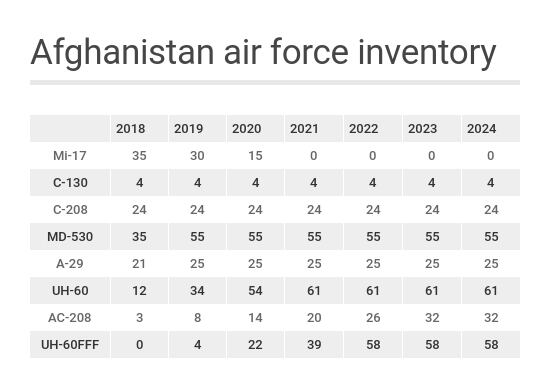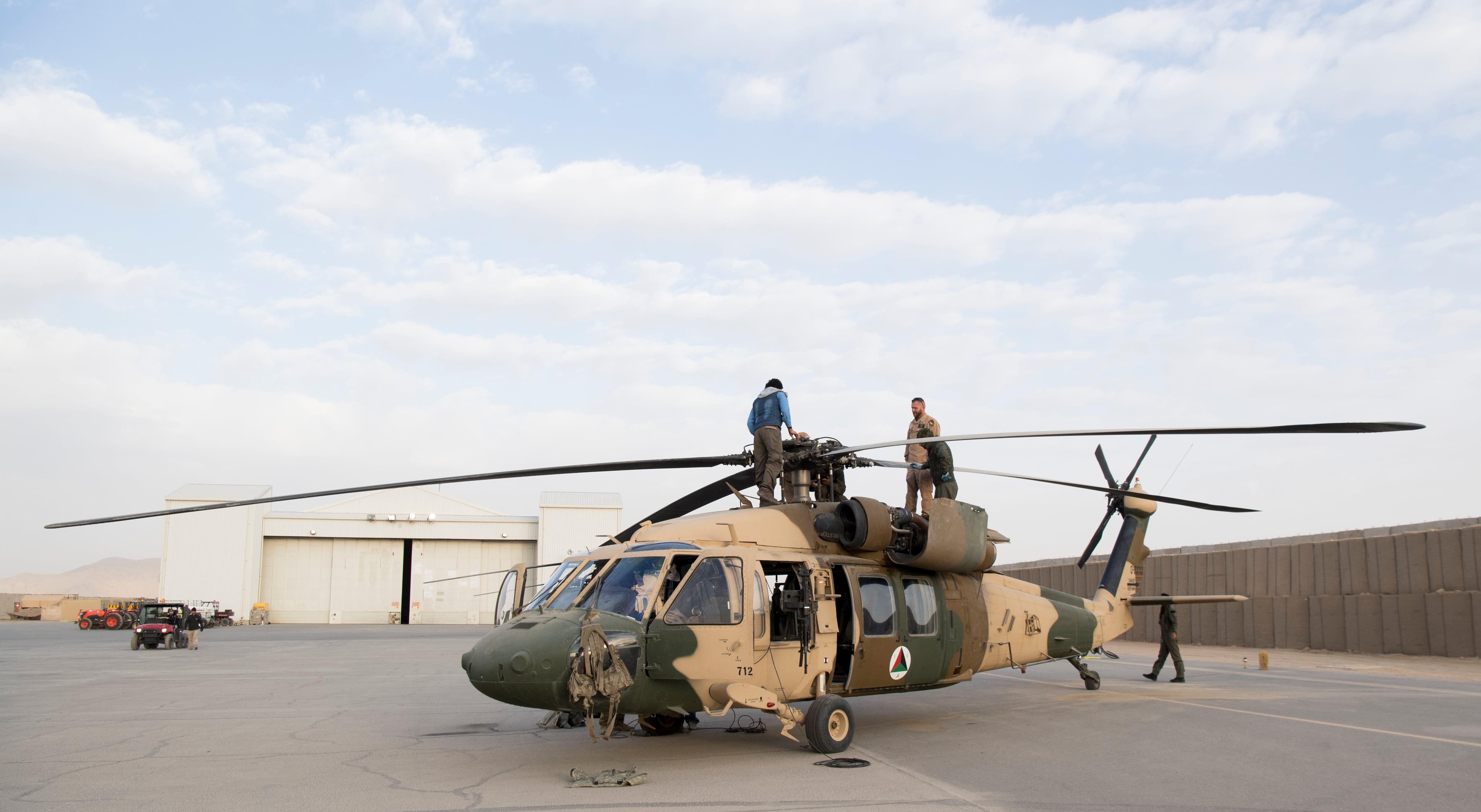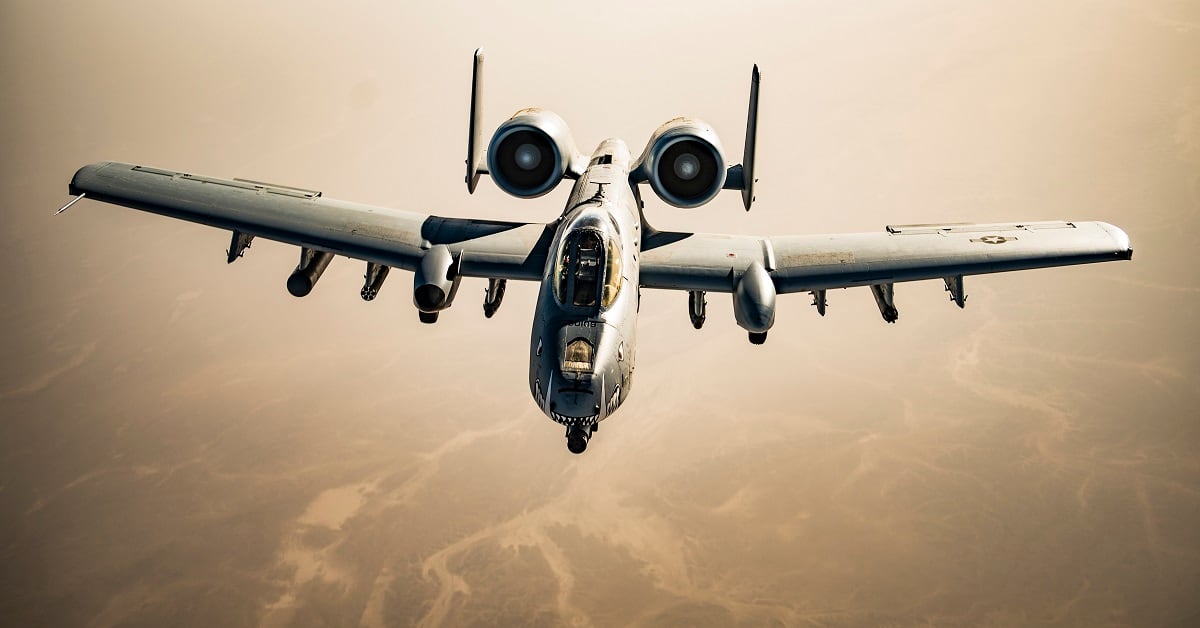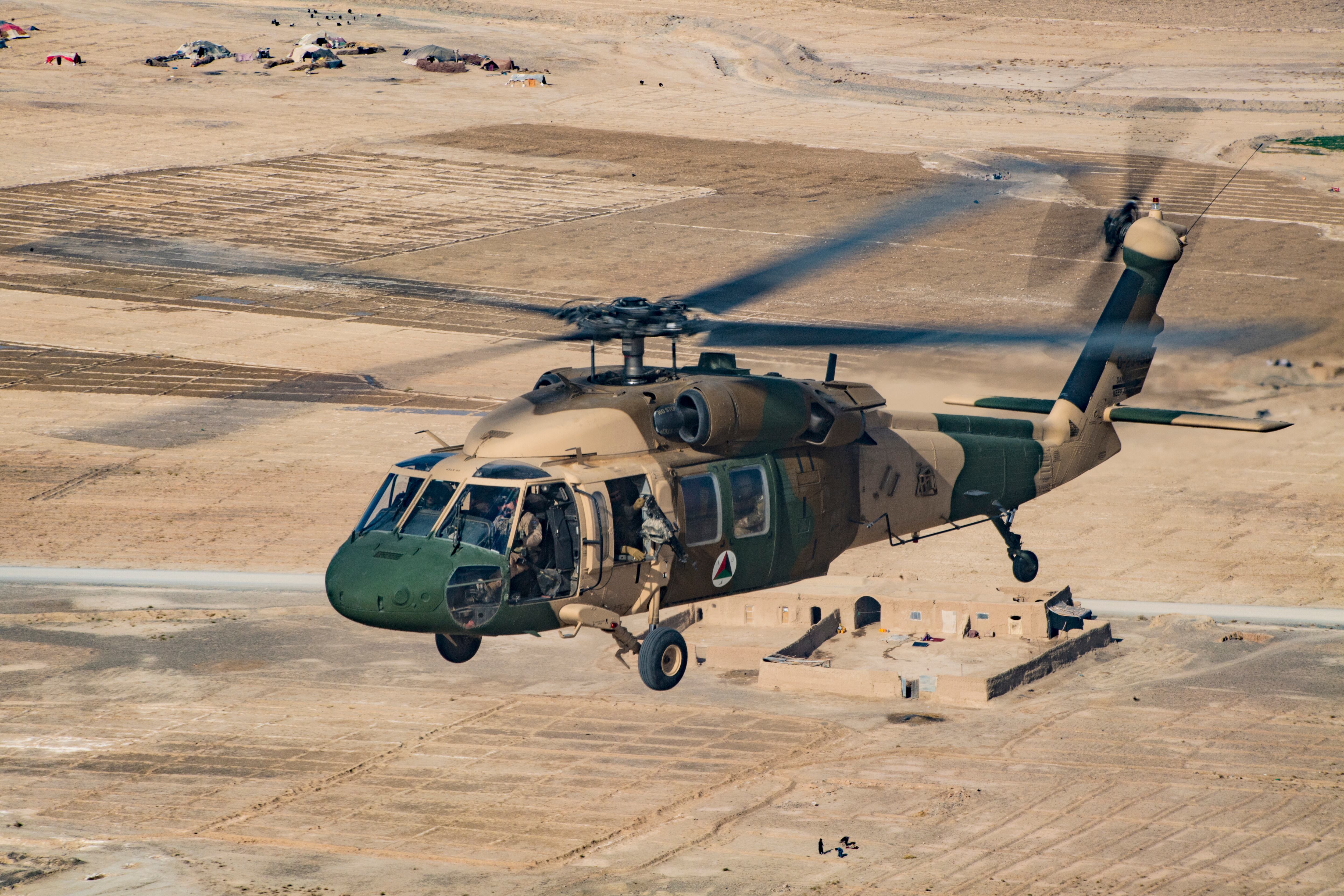The U.S. has been transitioning Afghanistan’s air force from a fleet of Soviet-era Mi-17 helicopters to the U.S.-made UH-60 Black Hawks since 2017, but recruiting, training and sustainment challenges plague the program.
The Black Hawk shipments are part of the Afghan Air Force’s modernization initiative. The first 16 of 159 UH-60 helicopters have already been delivered. When complete, 119 of the Black Hawks will go to the Afghan Air Force, while the other 40 will go to the elite reconnaissance and extraction pilots of Special Mission Wing, at an estimated cost of $5.75 billion to $7 billion.
Based on the Black Hawks' current delivery schedule, however, it remains unlikely that there will be enough pilots trained before all the aircraft are received. And even if the training and fielding of pilots picks up, the Pentagon has no training course to teach Afghans how to maintain Black Hawks on their own, rather than rely on American contractors.
These findings were issued in a performance audit by the Special Inspector General for Afghanistan Reconstruction, or SIGAR, this week.
But despite the difficulties of executing such an ambitious modernization program in a country where literacy rates are still among the lowest in the world, the Black Hawks will be a valuable asset, an Afghan pilot who asked to remain anonymous due to security concerns told Military Times.
“The general feelings towards Black Hawks is very positive in [the Afghan Air Force] and [Special Mission Wing], and that is because we all know that Mi-17 are not sustainable in the long run,” the pilot said.
“The only concern that [Afghan pilots] have is to [receive] CH-47 Chinook helicopters along with Black Hawks,” he said, adding that the additional Chinooks would help close the gap left by Mi-17s.
If, for example, the Afghan Air Force received two Chinooks per Kandak, or battalion, that could add additional lift capacity that Mi-17s currently have and ease concerns.
RELATED

While the request for Chinooks has gone up the chain of command, according to the pilot, nothing official has been announced.
The new Black Hawks are faster, more maneuverable, and pack more lethality than Afghanistan’s current Mi-17s. However, the old Soviet helicopters have significant lift capacity that’s being forfeited.
“[UH-60s] are unable to accommodate some of the larger cargo items the Mi-17s can carry, and in general, it takes almost two Black Hawks to carry the load of a single Mi-17,” a May 2018 Defense Department Inspector General review reads. “Furthermore, unlike Mi-17s, Black Hawks cannot fly at high elevations and, as such, cannot operate in remote regions of Afghanistan where Mi-17s operate.”
Larger Ch-47 Chinooks could make up the difference. However, given that the Afghan Air Force already has a difficult time maintaining the Black Hawks, adding Chinooks may cause more issues.
SIGAR’s latest audit found that there is currently no training course to teach Afghan personnel to maintain the UH-60s, all of which will be delivered through 2023.

The U.S. Defense Department estimates that the cost of contractor-provided maintenance will be more than $2.8 billion and is likely to grow, according to SIGAR.
If a U.S. troop draw-down ends up happening, too few Afghan maintenance personnel will limit UH-60 operations because DoD policy bars American contractors from working where there isn’t sufficient security provided by the NATO coalition.
On top of the maintenance issue, there remains a lack of qualified Afghan pilots to fly the new Black Hawks.
The Pentagon has provided a solution, according to SIGAR. Officials are looking to establish additional Afghan pilot training locations, as well as a maintenance development center outside of Afghanistan to focus specifically on training entry-level UH-60 maintainers.
Abdul Rahman Rahmani, a pilot-in-command at Special Mission Wing, wrote an article for Small Wars Journal advocating the switch to Black Hawks alongside Lt. Jack McCain, a U.S. Navy helicopter pilot and instructor.
One issue they addressed was that of maintaining the aircraft. Some observers have questioned the move away from Mi-17s, which rely on Russian-made parts but are more common in Afghanistan’s part of the world.
“The U.S. would provide the majority of [UH-60] aircraft parts to the [Afghan Air Force] faster from Bagram and Kandahar, as opposed to Mi-17 parts which were not only exceedingly expensive but also required more time and negotiations to be made with the Russian government, an unreliable broker, at best," Rahmani and McCain wrote.

SIGAR previously noted in an October 2017 report that Afghanistan’s fleet of Mi-17s was in a state of decline. When the aircraft needed overhaul inspections, they would have to be sent to countries like Bulgaria, the Czech Republic, and Slovakia, according to Rahmani and McCain.
The Black Hawks, even before Afghan airmen are trained, can be inspected by U.S. contractors inside Afghanistan.
Other advantages to the switch to Black Hawks include the translation of training and maintenance publications. An Mi-17 operating manual must be translated from Russian, to English and then to Dari or Pashtu. The process “was time and energy intensive, which negatively affected maintenance efforts, and leads to misunderstanding," Rahmani and McCain said.
Additionally, the Afghan National Army still largely relies on the U.S. Air Force for air support, as seen during the momentary captures of portions of Ghazni and Farah cities this summer. The new Black Hawks will play an important role in delivering air power from the Afghan side of operations.
RELATED

Very few Mi-17 helicopters have been designated as gunships, complete with forward-firing weapons, according to Rahmani and McCain. Out of the 159 Black Hawks going to Afghanistan, though, 58 would be outfitted with the armament for gunship missions.
Finally, Black Hawks will come with secure communications equipment that is compatible with American allies. That was not the case with the Russian Mi-17s.
“Black Hawks will provide seamless and secure communication during operations, eliminating the requirement for cumbersome workarounds," Rahmani and McCain said. "Clear and concise communications, unimpeded by interoperability issues, are critical for future successes in the war for Afghanistan.”
Kyle Rempfer was an editor and reporter who has covered combat operations, criminal cases, foreign military assistance and training accidents. Before entering journalism, Kyle served in U.S. Air Force Special Tactics and deployed in 2014 to Paktika Province, Afghanistan, and Baghdad, Iraq.




